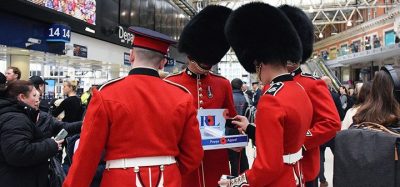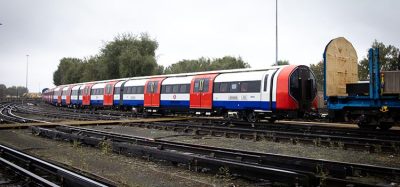HS1 to develop augmented reality technology to virtually replicate rail assets
Posted: 11 January 2021 | Global Railway Review | No comments yet
The technology will monitor the real-time performance of rail assets and allow for the swift detection and repair of faults.


HS1 Ltd, the owner and operator of the UK’s only high-speed railway, is on track to revolutionise the rail industry by developing augmented reality technology that will virtually replicate rail assets on the High Speed One (HS1) line by 2021.
The technology will monitor the real-time performance of rail assets and allow for the swift detection and repair of faults on St Pancras Station’s lifts, escalators and travelators, as well as signalling equipment along the high-speed line.
Sensors will pick up and relay faults back to maintenance teams via a private 5G network. Maintenance engineers can then be swiftly dispatched to repair the faults, thus saving time and money, and efficiently managing the railway and station.
The project will help engineers to make more informed decisions in terms of repairs, and ultimately improve safety along the line, as it will reduce the need for on-site intervention. In addition, the expected reduction in CO2 emissions as a result of maintenance activities taking less time to complete contributes to HS1 Ltd’s environmental targets, as outlined in its recently launched Sustainability Strategy.
The aim of the project is to enable the flow of data and information between on-site and remote maintenance teams. This will help HS1 Ltd to develop its knowledge and understanding of new maintenance methods. This will also improve training and competency and result in efficiency and performance benefits for the network, which will ultimately lead to an enhanced experience for passengers and customers.
The new technology will lessen the impact of disruption to the railway caused by COVID-19 and, if widely adopted, could improve productivity and cut costs at more than 3,000 UK railway stations and the wider network. The project also aims to support the UK government’s National Digital Twin programme (NDTp), led by the Centre for Digital Built Britain.
The project is funded by Innovate UK, in partnership with PAULEY Group Limited, Network Rail (High Speed) Limited, Athonet UK Limited and the University of Sheffield Advanced Manufacturing Research Centre (AMRC).
Dyan Crowther, CEO of HS1 Ltd, said: “At HS1 Ltd, we are always looking at ways in which we can improve the UK’s only high-speed rail system. Our innovative approach to technology means that we are able to monitor and maintain our assets in a more efficient and sustainable way, leading to an improved customer experience. The system will not only create a more reliable rail network, but will allow our expert teams to maintain social distancing guidelines when responding to jobs. Thanks to Innovate UK and our partners, we are able to lead the way in revolutionising London’s railway stations post-COVID.”
Innovate UK’s Executive Chair, Dr Ian Campbell, said: “In these difficult times, we have seen the best of British business innovation. The pandemic is not just a health emergency, but one that impacts society and the economy. The 5G Augmented Reality Digital Twin Project, along with every initiative that Innovate UK has supported through this fund, is an important step forward in driving sustainable economic development. Each one is also helping to realise the ambitions of hard-working people.”
Philip Pauley, Managing Director of PAULEY Group Limited, said: “PAULEY are delighted to support HS1 in their Race to Zero commitment to become the first renewable-powered railway in the country by 2030. Following on from our hugely successful DfT/Innovate UK First of a Kind “simulated” AR Digital Twin Station project with HS2 last year, UK Research and Innovation (UKRI) have again shown their support to demonstrate the value derived from immersive technology adoption across UK industry. Our collaboration with HS1, NRHS, AMRC and Athonet 5G will demonstrate how immersive technology has the power to drive operational efficiency and sustainability in line with the Industrial Strategy, UKRI and COP26 targets to help reduce whole life-cycle carbon (WLC) emissions.”
Related topics
5G, Augmented Reality (AR), Big Data, Coronavirus/COVID-19, Digital Twins, Digitalisation, High-Speed Rail, Operational Performance, Passenger Experience/Satisfaction, Signalling, Control & Communications, Sustainability/Decarbonisation, Technology & Software
Related organisations
Athonet UK Limited, Centre for Digital Built Britain, Department for Transport (DfT), High Speed 1 (HS1 Ltd), Innovate UK, Network Rail (High Speed) Limited, PAULEY Group Limited, University of Sheffield Advanced Manufacturing Research Centre (AMRC)








